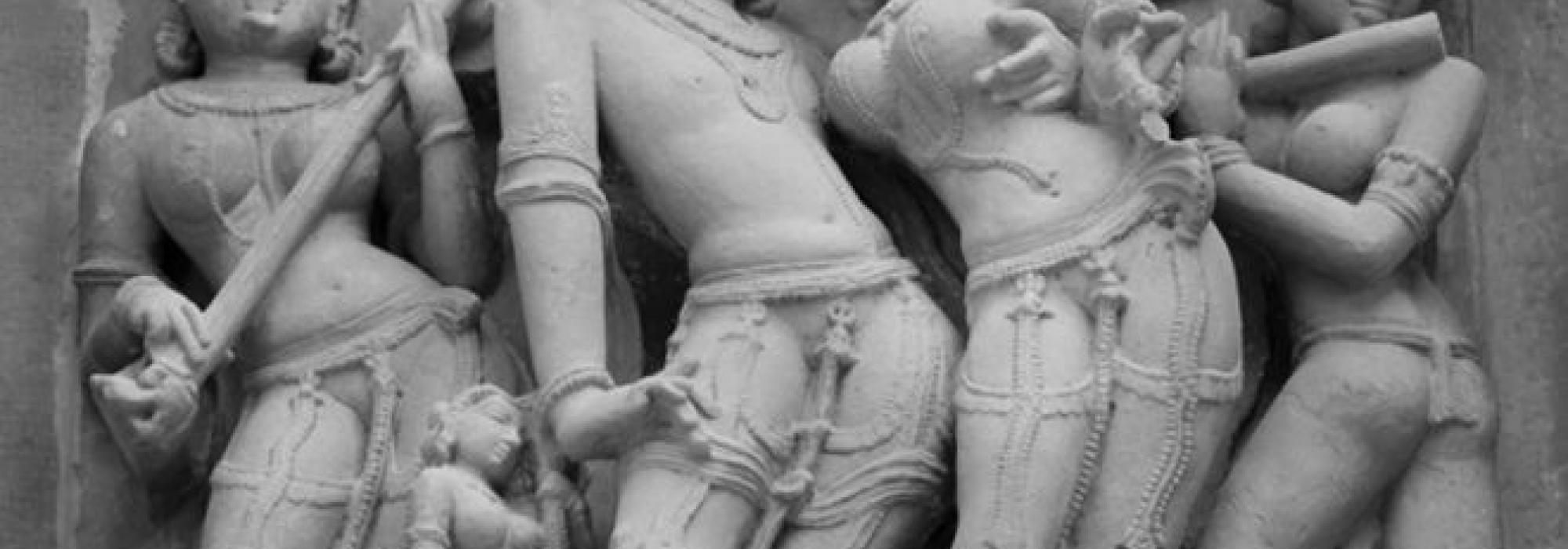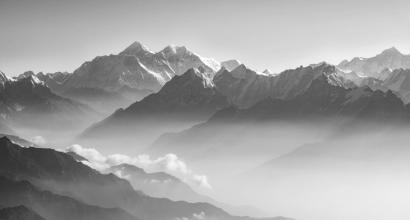Among the four vṛttis that Bharata describes in his Nāṭyaśāstra (namely, the sāttvikī, kaiśikī, ārabhaṭī and bhāratī), kaiśikī renders itself the best for the portrayal of śṛṅgāra. Kaiśikī is a softer and more graceful mode of expression and is usually associated with curvilinear movements and ornate expressions. This has four limbs, namely narma, narmasphiñja, narmasphoṭa and narmagarbha and many secondary limbs. Bharata, Dhanañjaya, Dhanika and others say that one must understand these categories by close observation of the world. [It can say that the vṛttis are closer to nāṭyadharmī and the Pravṛttis to Lokadharmī. While nāṭyadharmī is stylized and based on the documented patterns in a śāstra, Lokadharmī is closer to the regional tastes, folk and to the local customs and lifestyles.] Thus, one can say that graceful śṛṅgāra can only be depicted effectively through the Kaiśikī vṛtti.
Lāsya, that involves soft, elegant and curvilinear elements is largely feminine in nature. This mode of execution is feminine in nature, but does not necessarily mean that only women are to execute it. Feminine elements have characteristics that come naturally to women – fineness, ornamentation and softness. Tāṇḍava, on the other hand, is masculine. It is characterised by rigour, intense energy, complexity and sharpness. In the execution of kaiśikī-vṛtti, even the male characters are tempered down and softened. On the contrary, women are portrayed to be tougher and masculine in the ārabhaṭī -vṛtti.
Śṛṅgāra, that is communicated through these modes is of two kinds – sambhoga and vipralambha. Sambhoga is characterised by the union of lovers and vipralambha by the separation thereof. Both varieties have rati (love) as the primary emotion (sthāyi-bhāva). Sthāyi-bhāvas are the fundamental and universal states of mind of men, that are natural to them. Rati, hāsa, utsāha, krodha and others constitute the eight sthāyi-bhāvas. (Some opine that the number of sthāyi-bhāvas is nine and some even say that it is eleven. The causes that bring in the sthāyi-bhāvas are the vibhāvas. The reactions are the anubhāvas. Vibhāvas is of two kinds – ālambana and uddīpana. The hero serves as an ālambana –vibhāva for the heroine and vice versa. Uddīpana-vibhāva is function of the environment and the other people involved. Vyabhicāri-bhāva occurs in flashes and does not remain constant and according to Bharata, is of thirty-three kinds. Only when the sthāyi-bhāvaa is bolstered by vibhāvas - anubhāvas and vyabhicāri-bhāva, does it graduate to a rasa. Viṣṇu is the deity of the śṛṅgāra and there is certainly no dearth for content in executing the rasa. Śṛṅgāra is representative of one of the four fundamental puruṣārthas, namely kāma.
We know from the Bhagavadgītā that Kṛṣṇa is kāma, which is not opposed to dharma -
Dharmāviruddho bhūteṣu kāmo'smi bharatarṣabha
The vibhāvas for śṛṅgāra are decking up oneself with beautiful costumes and ornaments, the presence of forests, hills, rivers, peaceful cities, a house and taunts of friends. Different emotions such as suspicion, jealousy, intoxication, dream and restlessness come as vyabhicāri-bhāvas. Gentle emotions such as wonder, a sly smile and soft words are used to express love with the subtle movement of the eyes, lips, legs and hands. Śṛṅgāra can have ten different states (avasthas), namely - desire, worry, recollection, describing the other’s virtues, anxiety, anger, excitement, feverishness, stupefaction and death. These chronologically show the intensification of śṛṅgāra and the pain that is experienced during separation (vipralambha). Śṛṅgāra is best executed when these states are enriched by the display of sāttvika-bhāvas such as stambha (stupefaction), sveda (sweat), romāñca (horripilation), svarabhanga (change in voice), kampana (trembling), vaivarṇya (discolouration), aśru (tears) and praḻaya (going unconscious). When these natural impulses are blended with stylized presentation (nāṭyadharmī), śṛṅgāra will take a form that is neither artificial nor vulgar. Under such optimal conditions, external factors such as the moon, cool-breeze, sandal-paste, gardens, flowers, clouds, change of seasons, deer, presence of birds such as parrots, peacocks and swans, come in to add beauty. Characters associated with the hero and heroine, such as a friend (sakha/ sakhi), a messenger (dūti), viṭa (a person well-versed with the ways of love), vidūṣaka (a comedian), ceṭa (a person who can patch up relationships) have pertinent roles and they can assist the presentation with their comedy, service, taunts, messages and help in decoration. In this manner, śṛṅgāra, one of the universal emotions finds its best expression when all the said parameters come in the right proportion. The rasānanda (aesthetic experience) thus caused will never fail anyone.
While experiencing the Rasa, a connoisseur overcomes the shortcomings of the world and is in a state of Absolute Bliss. It is a state of citta-vṛtti-vilāsa (the relaxation/ enjoyment of the inner landscape).
The play of Rasas, especially śṛṅgāra, in the current context is a function of the acting of the hero and the heroine. The instances which are creatively portrayed by a poet can evoke rasa. This is mainly concretised in the hero and the heroine. The rest of the characters are merely off-shoots of the primary ones and their emotions are depended on those of the hero and the heroine. Our current interest is in describing these primary characters in the backdrop of śṛṅgāra.
A common misunderstanding is that the Indian theoreticians in general and aestheticians in particular are fond of categorising everything that comes before them. One can easily say that such hair-splitting analysis and defining too many meaningless categories is only a sign of the downfall of tradition. Such extreme categorization can be misleading and is dangerous too, opine some scholars. However, defining categories is mainly for the purpose of better analysis and for ease of understanding. It does not mean to add extra layers of complexity to a simple problem. Today, science too has come up with Finite Element Technique, which reduces all matter to infinitesimally small categories and analyses them bit by bit. While it is true that this is artificial and not absolute, it is essential for better understanding. In aesthetics, categorization helps in technical analysis of the subject and educates us about the wide spectrum of possibilities. It gives scope to creativity in different dimensions without foregoing propriety.
The original Kannada article by Shatavadhani R. Ganesh is from the collection ‘Yakṣarātri’.




































